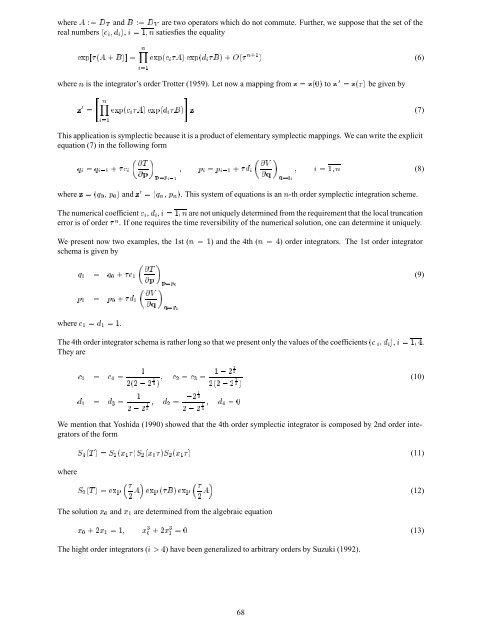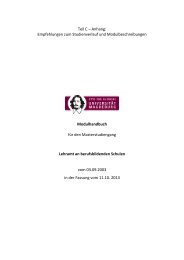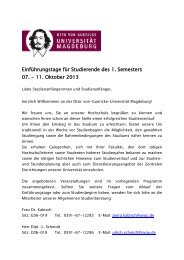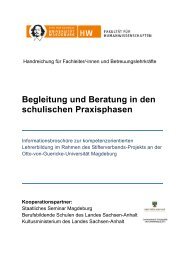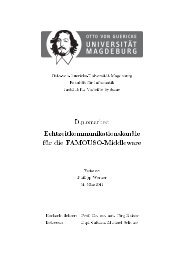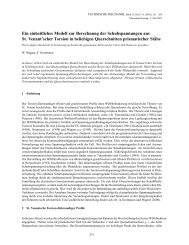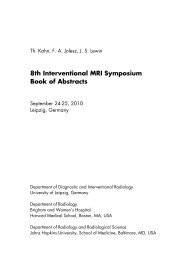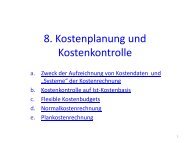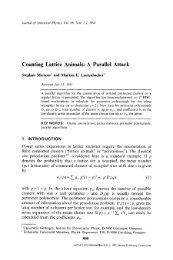Symplectic and Regularization Methods
Symplectic and Regularization Methods
Symplectic and Regularization Methods
Create successful ePaper yourself
Turn your PDF publications into a flip-book with our unique Google optimized e-Paper software.
where Ì <strong>and</strong> Î are two operators which do not commute. Further, we suppose that the set of the<br />
real numbers ´ µ, ½Òsatiesfies the equality<br />
ÜÔ ´ · µ℄ <br />
Ò<br />
½<br />
ÜÔ´ µ ÜÔ´ µ·Ç´ Ò·½ µ (6)<br />
where Ò is the integrator’s order Trotter (1959). Let now a mapping from Þ Þ´¼µ to Þ ¼ Þ´ µ be given by<br />
Þ ¼ <br />
Ò<br />
<br />
½<br />
ÜÔ´ µ ÜÔ´ µ<br />
<br />
Þ (7)<br />
This application is symplectic because it is a product of elementary symplectic mappings. We can write the explicit<br />
equation (7) in the following form<br />
Õ Õ ½ · <br />
Ì<br />
Ô<br />
<br />
ÔÔ ½<br />
<br />
Î<br />
Ô Ô ½ · ½Ò (8)<br />
Õ ÕÕ <br />
where Þ ´Õ ¼ Ô ¼ µ <strong>and</strong> Þ ¼ ´Õ Ò Ô Ò µ. This system of equations is an Ò-th order symplectic integration scheme.<br />
The numerical coefficient , , ½Òare not uniquely determined from the requirement that the local truncation<br />
error is of order Ò . If one requires the time reversibility of the numerical solution, one can determine it uniquely.<br />
We present now two examples, the 1st (Ò ½) <strong>and</strong> the 4th (Ò ) order integrators. The 1st order integrator<br />
schema is given by<br />
Õ ½ Õ ¼ · ½<br />
Ì<br />
Ô<br />
Ô ½ Ô ¼ · ½<br />
Î<br />
Õ<br />
where ½ ½ ½.<br />
<br />
<br />
ÔÔ ¼<br />
(9)<br />
ÕÕ ½<br />
The 4th order integrator schema is rather long so that we present only the values of the coefficients ´ µ, ½ .<br />
They are<br />
½ <br />
½<br />
¾´¾ ¾ ½ ¿ µ<br />
¾ ¿ ½ ¾ ½ ¿<br />
¾´¾ ¾ ½ ¿ µ<br />
(10)<br />
½ ¿ ½<br />
¾ ¾ ½ ¿<br />
<br />
¾ ½ ¿<br />
¾ <br />
¾ ¾ ½ ¿<br />
<br />
¼<br />
We mention that Yoshida (1990) showed that the 4th order symplectic integrator is composed by 2nd order integrators<br />
of the form<br />
Ë ´Ì µË ¾´Ü ½ µË ¾´Ü ¼ µË ¾´Ü ½ µ (11)<br />
where<br />
<br />
<br />
<br />
Ë ¾´Ì µÜÔ ÜÔ ´µ ÜÔ <br />
¾ ¾<br />
(12)<br />
The solution Ü ¼ <strong>and</strong> Ü ½ are determined from the algebraic equation<br />
Ü ¼ ·¾Ü ½ ½ Ü ¿ ¼ ·¾Ü¿ ½ ¼ (13)<br />
The hight order integrators ( ) have been generalized to arbitrary orders by Suzuki (1992).<br />
68


